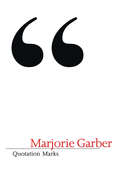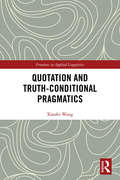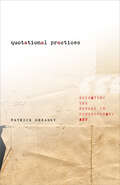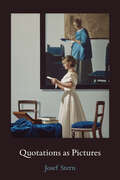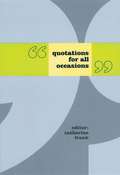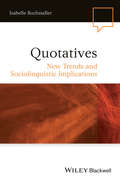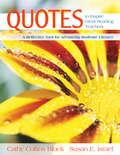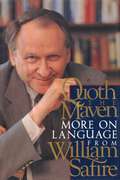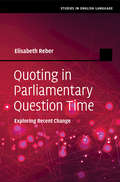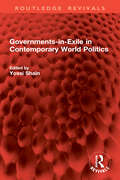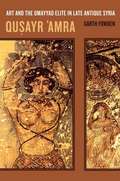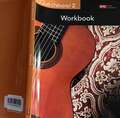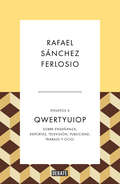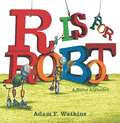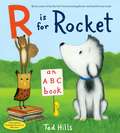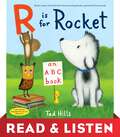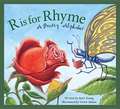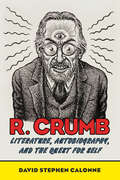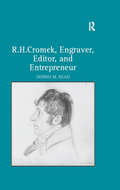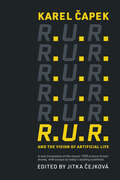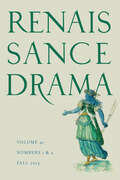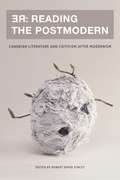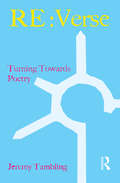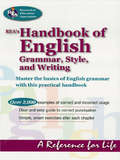- Table View
- List View
Quotation Marks
by Marjorie GarberWritten with characteristic verve, Quotation Marks considers, among other subjects, how we depend upon the most quotable men and women in history, using great writers to bolster what we ourselves have to say. The entertaining turns and reversals of Marjorie Garber's arguments offer the rare pleasure of a true essayist.
Quotation and Truth-Conditional Pragmatics (Frontiers in Applied Linguistics)
by Xiaofei WangIn the past decades, quotation theories have developed roughly along three lines—quotation types, meaning effects, and theoretical orientations toward the semantics/pragmatics distinction. Currently, whether the quoted expression is truth-conditionally relevant to the quotational sentence, and if there is a truth-conditional impact, whether it is generated via semantic or pragmatic processes, have become the central concerns of quotation studies. In this book, quotation is clearly defined for the first time as a constituent embedded within yet distinctive from the quotational sentence. Also, as the first monograph to address the semantics/pragmatics boundary dispute over quotation, it argues that the semantic content of quotation amounts to its contribution to the intuitive truth-conditional content of the quotational utterance via two modes of presentation, which are incarnated in the functioning of quotation marks and manifested as use and mention. The use/mention-based analysis in this book can shed light on the semantic theorizing of other metalinguistic phenomena, while the semantics/pragmatics perspective will provide methodological implications for other relevant studies. The new conception of quotation and thought-provoking analysis on use/mention, truth-conditional pragmatics, and the semantics/pragmatics boundary in this book will appeal to scholars and students in philosophy of language and linguistics. It will also serve as a clear guide to the current state of quotation studies and how to formulate a semantic theory of quotation.
Quotational Practices: Repeating the Future in Contemporary Art
by Patrick GreaneyLiterature and art have always depended on imitation, and in the past few decades quotation and appropriation have become dominant aesthetic practices. But critical methods have not kept pace with this development. Patrick Greaney reopens the debate about quotation and appropriation, shifting away from naïve claims about the death of the author. In interpretations of art and literature from the 1960s to the present, Quotational Practices shows how artists and writers use quotation not to undermine authorship and originality, but to answer questions at the heart of twentieth-century philosophies of history.Greaney argues that quotation is a technique employed by art and philosophy to build ties to the past and to possible futures. By exploring quotation&’s links to gender, identity, and history, he offers new approaches to works by some of the most influential modern and contemporary artists, writers, and philosophers, including Walter Benjamin, Guy Debord, Michel Foucault, Marcel Broodthaers, Glenn Ligon, Sharon Hayes, and Vanessa Place.Ultimately, Quotational Practices reveals innovative perspectives on canonical philosophical texts as well as art and literature in a wide range of genres and mediums—from concrete poetry and the artist&’s book to performance, painting, and video art.
Quotations as Pictures
by Josef SternThe proposal of a semantics for quotations using explanatory notions drawn from philosophical theories of pictures. In Quotations as Pictures, Josef Stern develops a semantics for quotations using explanatory notions drawn from philosophical theories of pictures. He offers the first sustained analysis of the practice of quotation proper, as opposed to mentioning. Unlike other accounts that treat quotation as mentioning, Quotations as Pictures argues that the two practices have independent histories, that they behave differently semantically, that the inverted commas employed in both mentioning and quotation are homonymous, that so-called mixed quotation is nothing but subsentential quotation, and that the major problem of quotation is to explain its dual reference or meaning—its ordinary meaning and its metalinguistic reference to the quoted phrase attributed to the quoted subject. Stern argues that the key to understanding quotation is the idea that quotations are pictures or have a pictorial character. As a phenomenon where linguistic competence meets a nonlinguistic symbolic ability, the pictorial, quotation is a combination of features drawn from the two different symbol systems of language and pictures, which explains the exceptional and sometimes idiosyncratic data about quotation. In light of this analysis of verbal quotation, in the last chapters Stern analyzes scare quotation as a nonliteral expressive use of the inverted commas and explores the possibility of quotation in pictures themselves.
Quotations for All Occasions
by Catherine FrankOn the most important occasions of our lives, we often find ourselves at a loss for words; when we want to console, celebrate, explain, inspire, or thank, we end up repeating such uninspiring, uninformative phrases as "Words cannot express how I feel." To help us find the right words, Catherine Frank has compiled this handy compendium of quotations that capture the mundane and the magnificent, the everyday and extraordinary moments of our lives.The three sections of the book cover 150 occasions. "Every Year" offers quotations on all the special dates in the calendar from New Year's Day to New Year's Eve, including Martin Luther King Day, Valentine's Day, Ramadan, Mother's Day, Thanksgiving, Kwanzaa, and Christmas. "Occasionally" presents quotations on such occasions as giving a speech, having an interview, becoming a parent, getting engaged, welcoming someone, and saying goodbye. "Once in a Lifetime" provides quotations on such momentous events as confirmation, coming out, turning 16, graduation, and retirement. A sampling: Plato, John Donne, and Woody Allen give their words of wisdom on death. Betty Ford writes eloquently on recovery. Martina Navratilova ruminates on her first sexual encounter... and Holden Caufield on his. Ralph Waldo Emerson, Mark Twain, and Frederick Douglass ponder Independence Day. Amy Tan reflects on the meaning of the Chinese New Year. Samuel Taylor Coleridge and Susan Sontag offer poignant descriptions of pain and illness.Whether you are offering consolation or congratulations, condolences or confessions, Quotations for All Occasions has the perfect words for every occasion.
Quotatives
by Isabelle BuchstallerQuotatives considers the phenomenon "quotation" from a wealth of perspectives. It consolidates findings from different strands of research, combining formal and functional approaches for the definition of reported discourse and situating the phenomenon in a broader typological and sociolinguistic perspective.Provides an interface between sociolinguistic research and other linguistic disciplines, in particular discourse analysis, typology, construction grammar but also more formal approachesIncorporates innovative methodology that draws on discourse analytic, typological and sociolinguistic approachesInvestigates the system both in its diachronic development as well as via cross-variety comparisonsPresents careful definition of the envelope of variation and considers alternative definitions of the phenomenon "quotation"Empirical findings are reported from distribution and perception data, which allows comparing and contrasting perception and reality
Quotes to Inspire Great Reading Teachers: A Reflective Tool for Advancing Students' Literacy
by Cathy Collins Block Susan E. IsraelA year's worth of thought-provoking quotations will inspire you to reflect on the way you teach and provide you with tools to inspire your students, too!
Quoth the Maven: More on Language from William Safire
by William SafireThe Pulitzer Prize-winning columnist discusses contemporary figures of speech, from witty stories about expressions such as "kiss and tell" and "stab in the back" to the evolution of "read my lips."NOTE: This edition does not include illustrations.
Quoting in Parliamentary Question Time: Exploring Recent Change (Studies in English Language)
by Elisabeth ReberWhy do recordings of speakers engaging in reported speech at British Prime Minister's Questions from the 1970s–80s sound so distant to us? This cutting-edge study explores how the practices of quoting have changed at parliamentary question time in light of changing conventions and an evolving media landscape. Comparing data from authentic audio and video recordings from 1978-1988 and 2003-2013, it provides evidence for qualitative and quantitative changes at the micro level (e.g., grammaticalisation processes in the reporting clause) and in more global structures (e.g., rhetorical patterns, and activities). These analytic findings contribute to the theoretical modelling of evidentiality in English, our understanding of constructions, interaction, and change, and of PMQs as an evolving community of practice. One of the first large-scale studies of recent change in an interactional genre of English, this ground-breaking monograph offers a framework for a diachronic interactional sociolinguistic research programme.
Qur’an and Bible: Studies in Interpretation and Dialogue (Routledge Revivals)
by M. S. SealeRival ‘communities of the faithful’ are not in the habit of reading each other’s books, and when they do so, it is often to find fault and disparage. This attitude, so common a generation ago, is today giving way to mutual tolerance and an interest in ‘dialogue’. However, we are still at the stage of being content with a superficial reading of each other’s scriptures.First published in 1978, Qur’an and Bible attempts to delve deeper, to solve some persistent puzzles, and to explore the common culture from which the Holy Books spring. Hebrew and Arabic, the original languages of the Bible and Qur'an are of the same linguistic family. Hence Arabic is a useful instrument with which to probe for the meaning of ancient Hebrew expressions and ideas as found in the Old Testament, and which continue to pose problems for translators and commentators. It is not merely a matter of one language elucidating another, but, more profoundly, of the light a language with a long unbroken tradition can throw on the desert culture shared by both the ancient Hebrews and the ancient Arabians.
Qusayr 'Amra: Art and the Umayyad Elite in Late Antique Syria
by Garth FowdenQusayr'Amra is a major Islamic archaeological site, a princely bathhouse with intact frescoes dating from the mid-eighth century. Fowden offers and imaginative and compelling analysis of the iconography and artistic context of the paintings and addresses fascinating and topical questions about early Islamic culture and the West.
Qué chévere! 2 Workbook 9
by Karin D. FajardoThe ¡Qué chévere! Workbook is designed to supplement the material taught in the student text. Each unit lesson contains supplemental vocabulary, grammar, and culture practice.
Qwertyuiop (Ensayos #4)
by Rafael Sánchez FerlosioQwertyuiop es el cuarto y último volumen de la colección que reúne la obra ensayística de Rafael Sánchez Ferlosio. QWERTYUIOP es la secuencia que, en los teclados alfanuméricos, forman las letras de la hilera superior. Parece una secuencia arbitraria, pero obedece a un orden racional, que combina, entre otros, criterios de frecuencia y proximidad. La decisión de titular así este cuarto y último volumen de los Ensayos de Rafael Sánchez Ferlosio ironiza sobre la diversidad de cuestiones que en él se abordan y que invitan, de entrada, a pensar en una gama de intereses dispersos y antojadizos. No es el caso. Los sutiles pero decisivos contrastes entre felicidad y satisfacción, entre remordimiento y arrepentimiento, entre instruir y enseñar, entre juegos y deportes; la determinante diferencia que implica hablar de sociedad de consumo o de sociedad de producción; las parejas de opuestos que forman conceptos como ocio y negocio, tiempo consuntivo y tiempo adquisitivo, bienes y valores... configuran, de una a otra de las piezas aquí reunidas, todo un campo de tensiones que tiene por trasfondo asuntos a los que Ferlosio nunca ha dejado de prestar atención -como la educación, la publicidad, la televisión, el trabajo, la mentalidad competitiva, el papel de la mujer, la comercialización de la belleza- y en los que se manifiesta su particular actitud crítica ante la modernidad, heredera y continuadora de la de autores como Thorstein Veblen y Th.W. Adorno. Esta obra ha recibido una ayuda a la edición del Ministerio de Educación, Cultura y Deporte.
R Is for Robot: A Noisy Alphabet
by Adam F. WatkinsThese noisy robots make the alphabet a hilarious adventure! In this noisy alphabet book, Adam F. Watkins’s silly robots are building the alphabet. Featuring hilarious robots making goofy noises, this alphabet book is perfect for young readers.
R Is for Rocket: An ABC Book (Rocket)
by Tad HillsLearn the ABCs with Rocket, the dog who inspires kids to read and write! This irresistible alphabet book from the creator of the New York Times bestsellers How Rocket Learned to Read and Rocket Writes a Story is sure to appeal to kids, parents, teachers, and librarians. From finding acorns, to balancing on a ball, to drawing a colorful caterpillar with crayons, readers will love exploring the wonderful world of Rocket and his friends. The whole cast is featured, among them the little yellow bird, the owl, Bella the squirrel, and more. Even Goose from the beloved and bestselling Duck & Goose books makes a cameo appearance! With charming and delightful scenes for every letter, here's an ode to the wondrous, mighty, gorgeous alphabet.
R Is for Rocket: An ABC Book: Read & Listen Edition (Rocket)
by Tad HillsLearn the ABCs with Rocket, the dog who inspires kids to read and write!This irresistible alphabet book from the creator of the New York Times bestsellersHow Rocket Learned to Read and Rocket Writes a Story is sure to appeal to kids, parents, teachers, and librarians. From finding acorns, to balancing on a ball, to drawing a colorful caterpillar withcrayons, readers will love exploring the wonderful world of Rocket and his friends. The whole cast is featured, among them the little yellow bird, the owl, Bella the squirrel, and more. Even Goose from the beloved and bestselling Duck & Goose books makes a cameo appearance! With charming and delightful scenes for every letter, here's an ode to the wondrous, mighty, gorgeous alphabet.This Read & Listen edition contains audio narration.
R is for Rhyme: A Poetry Alphabet
by Judy YoungBring the magic of poetry to life with R is for Rhyme: A Poetry Alphabet. From acrostics and ballads to meter and metaphor, author and poet Judy Young has written a delightful collection of poems to illustrate poetic tools, terms and techniques. Each term or technique is demonstrated in an accompanying poem so readers can see the method at work. Whether haiku or rap, sonnets or cinquain, budding writers of all ages will be inspired to put their imaginations to work crafting their own poems.
R. Crumb: Literature, Autobiography, and the Quest for Self
by David Stephen CalonneRobert Crumb (b. 1943) read widely and deeply a long roster of authors including Robert Louis Stevenson, Charles Dickens, J. D. Salinger, Jack Kerouac, William S. Burroughs, and Allen Ginsberg, as well as religious classics including biblical, Buddhist, Hindu, and Gnostic texts. Crumb’s genius, according to author David Stephen Calonne, lies in his ability to absorb a variety of literary, artistic, and spiritual traditions and incorporate them within an original, American mode of discourse that seeks to reveal his personal search for the meaning of life. R. Crumb: Literature, Autobiography, and the Quest for Self contains six chapters that chart Crumb’s intellectual trajectory and explore the recurring philosophical themes that permeate his depictions of literary and biographical works and the ways he responds to them through innovative, dazzling compositional techniques. Calonne explores the ways Crumb develops concepts of solitude, despair, desire, and conflict as aspects of the quest for self in his engagement with the book of Genesis and works by Franz Kafka, Jean-Paul Sartre, the Beats, Charles Bukowski, and Philip K. Dick, as well as Crumb’s illustrations of biographies of musicians Jelly Roll Morton and Charley Patton. Calonne demonstrates how Crumb’s love for literature led him to attempt an extremely faithful rendering of the texts he admired while at the same time highlighting for his readers the particular hidden philosophical meanings he found most significant in his own autobiographical quest for identity and his authentic self.
R. H. Cromek, Engraver, Editor, and Entrepreneur
by Dennis M. ReadBased on meticulous archival research, Dennis M. Read's study offers the most accurate and thorough account to date of the engraver, editor, and arts enthusiast R. H. Cromek. Though he is best known today as William Blake's nemesis, Cromek made significant contributions to the vitality of the arts in nineteenth-century Britain. Read traces Cromek's early years as an accomplished engraver, his collaborations and falling out with Blake, and his editing and publishing ventures, showing him to be a pioneer who recognized the opportunities of the emerging market economy. Read's descriptions of Cromek's disastrous associations with the Chalcographic Society, his publication of Robert Burns's unpublished works, and his duping by the perpetrator of a literary hoax make for fascinating reading and tell us much about the commercial art and publishing scenes in England and Scotland. Perhaps most important, Read salvages Cromek's reputation as an unscrupulous exploiter of Blake and others. A fuller and more balanced portrait emerges that shows Cromek's efforts to bring the arts to emerging cities of the midlands and beyond, describes his friendships and associations with luminaries of the fine arts and literature such as Leigh Hunt and Benjamin West, and challenges more biased reports of his successes and failures as an entrepreneur.
R.U.R. and the Vision of Artificial Life
by Karel CapekA new translation of Karel Čapek&’s play R.U.R.—which famously coined the term &“robot&”—and a collection of essays reflecting on the play&’s legacy from scientists and scholars who work in artificial life and robotics.Karel Čapek's &“R.U.R.&” and the Vision of Artificial Life offers a new, highly faithful translation by Štěpán Šimek of Czech novelist, playwright, and critic Karel Čapek&’s play R.U.R.: Rossum&’s Universal Robots, as well as twenty essays from contemporary writers on the 1920 play. R.U.R. is perhaps best known for first coining the term &“robot&” (in Czech, robota means serfdom or arduous drudgery). The twenty essays in this new English edition, beautifully edited by Jitka Čejková, are selected from Robot 100, an edited collection in Czech with perspectives from 100 contemporary voices that was published in 2020 to celebrate the hundredth anniversary of the play.Čapek&’s robots were autonomous beings, but biological, not mechanical, made of chemically synthesized soft matter resembling living tissue, like the synthetic humans in Blade Runner, Westworld, or Ex Machina. The contributors to the collection—scientists and other scholars—explore the legacy of the play and its connections to the current state of research in artificial life, or ALife. Throughout the book, it is impossible to ignore Čapek&’s prescience, as his century-old science fiction play raises contemporary questions with respect to robotics, synthetic biology, technology, artificial life, and artificial intelligence, anticipating many of the formidable challenges we face today.ContributorsJitka Čejková, Miguel Aguilera, Iñigo R. Arandia, Josh Bongard, Julyan Cartwright, Seth Bullock, Dominique Chen, Gusz Eiben, Tom Froese, Carlos Gershenson, Inman Harvey, Jana Horáková, Takashi Ikegami, Sina Khajehabdollahi, George Musser, Geoff Nitschke, Julie Nováková, Antoine Pasquali, Hemma Philamore, Lana Sinapayen, Hiroki Sayama, Nathaniel Virgo, Olaf Witkowski
RD vol 41 num 12
by The University of Chicago PressThis is volume 41 issue 12 of Renaissance Drama. Renaissance Drama explores the rich variety of theatrical and performance traditions and practices in early modern Europe and intersecting cultures. The sole scholarly journal devoted to the full expanse of Renaissance theatre and performance, the journal publishes articles that extend the scope of our understanding of early modern playing, theatre history, and dramatic texts and interpretation, encouraging innovative theoretical and methodological approaches to these traditions, examining familiar works, and revisiting well-known texts from fresh perspectives.
RE: Canadian Literature and Criticism after Modernism (Reappraisals: Canadian Writers)
by Robert David StaceyIt would be difficult to exaggerate the worldwide impact of postmodernism on the fields of cultural production and the social sciences over the last quarter century—even if the concept has been understood in various, even contradictory, ways. An interest in postmodernism and postmodernity has been especially strong in Canada, in part thanks to the country’s non-monolithic approach to history and its multicultural understanding of nationalism, which seems to align with the decentralized, plural, and open-ended pursuit of truth as a multiple possibility as outlined by Jean-François Lyotard. In fact, long before Lyotard published his influential work The Postmodern Condition in 1979, Canadian writers and critics were employing the term to describe a new kind of writing. RE: Reading the Postmodern marks a first cautious step toward a history of Canadian postmodernism, exploring the development of the idea of the postmodern and debates about its meaning and its applicability to various genres of Canadian writing, and charting its decline in recent years as a favoured critical trope.
RE: Turning Towards Poetry
by Jeremy TamblingMany people are intimidated by poetry, thinking it difficult and high-brow and not for them. But it is still considered an essential part of art and literature. RE:Verse asks; Why and How should we read poetry? This book, aimed at people just starting with literature, takes nothing for granted but opens poetry up to all in a way that makes it both exciting and fresh. Examples are taken from a balanced combination of traditional writers such as Keats, Wordsworth, Blake and Shakespeare, and modern poets such as Seamus Heaney, Jackie Kay and Benjamin Zephaniah. RE:Verse ranges over all periods of literature, and over the many critical theories that attempt to show why poetry matters. It places poems into their historical context, looks at poetry in translation, and discusses why much poetry is so difficult as to seem almost unreadable. It sets the standard for talking about how to read poetry, and what to do when this seems to be impossibly difficult. Ultimately, it is the essential, easy-to-read guide to the subject.
REA's Handbook of English Grammar, Style, and Writing (Language Learning Ser.)
by The Editors of REAREA's Handbook of English Grammar, Style, and Writing is a must for students! The ability to write and speak correctly and effectively is a prerequisite for doing well in all subjects, including the physical and social sciences, math and the liberal arts. Writing and speaking skills become even more important when seeking a job and trying to succeed in a chosen career. This easy-to-understand, straightforward English handbook doesn't use the technical jargon usually found in English grammar books. Instead, our handbook provides hundreds of examples from which it is possible to easily see what is correct and what is incorrect in all areas of English grammar and writing. Practice exercises with answers follow each chapter. The handbook covers the following in detail: nouns, verbs, adjectives, paragraphs, composition, punctuation, spelling, and much more. Our handbook explains the basics of: * Rules and exceptions in grammar * Spelling and proper punctuation * Common errors in sentence structure * Correct usage (with 2,000 examples of correct grammar & usage) * Effective writing skills. All the English essentials you need to know are contained in this simple and practical book.
